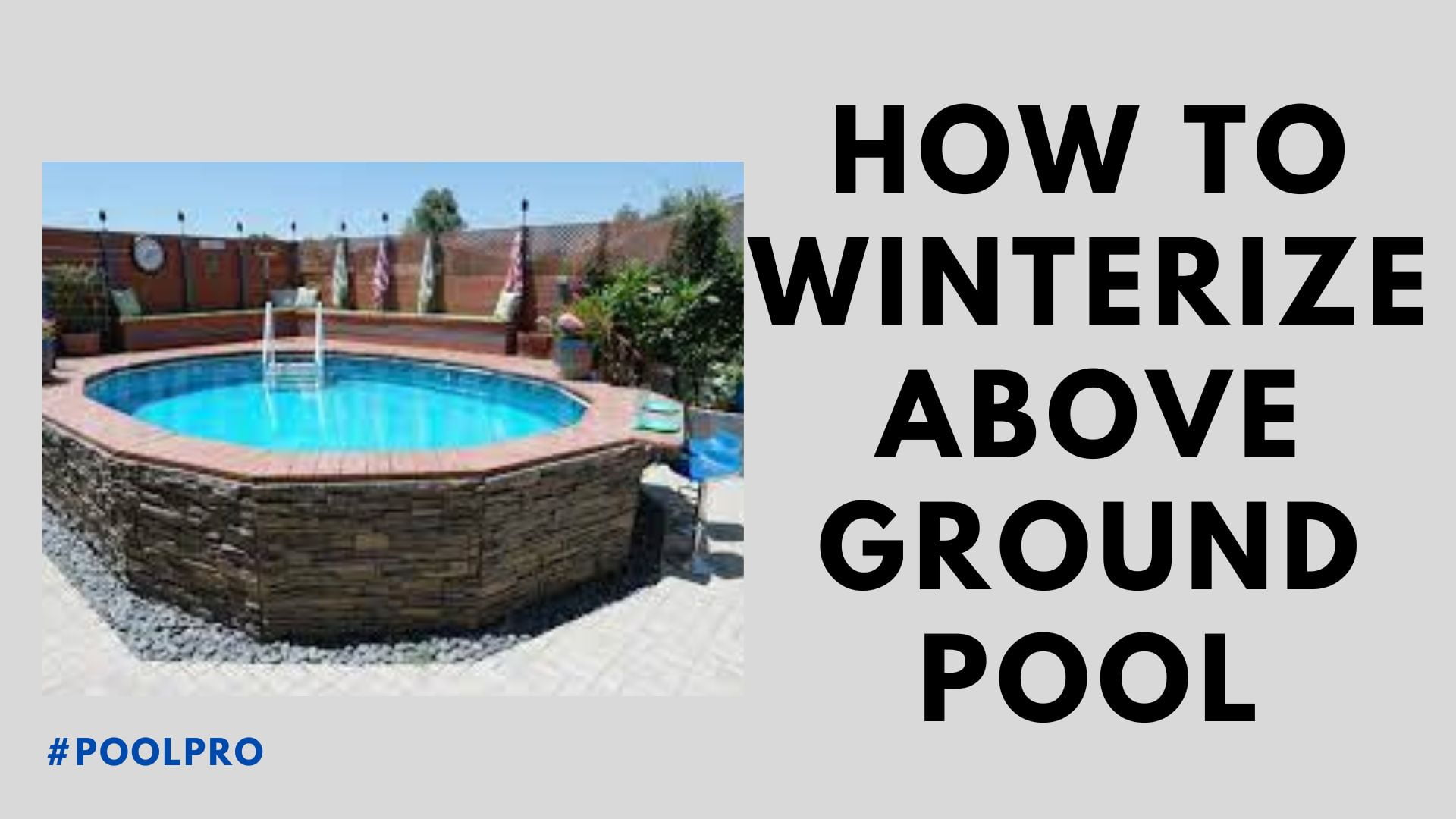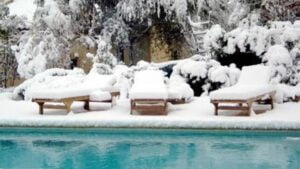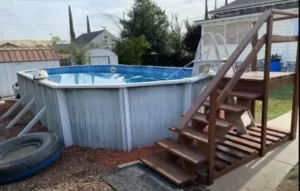When the winter season comes, it’s essential to take the necessary steps to protect your above ground pool from the harsh weather conditions. Properly winterizing your pool not only ensures its longevity but also makes the opening process in the following spring much easier.
In this guide, we will walk you through the steps on How to winterize above ground pool effectively. From preparing the water to safeguarding the pool equipment, we’ve got you covered!

Contents
How to Winterize Above Ground Pool
Winterizing your above ground pool involves a series of crucial steps to prevent damage caused by freezing temperatures, snow, and ice. By following these steps, you can ensure that your pool remains in excellent condition throughout the winter months.
Step 1: Clean the Pool
Before starting the winterization process, it’s crucial to thoroughly clean your above ground pool. Remove any debris, leaves, or dirt using a pool skimmer or net. Additionally, vacuum the pool floor to eliminate any remaining dirt particles.
Step 2: Balance the Water Chemistry
Properly balancing the water chemistry is vital to prevent the growth of algae and other microorganisms during the winter. Test the pool water and adjust the pH, alkalinity, and sanitizer levels accordingly. This will help maintain the water’s clarity and prevent any damage to the pool surface.
Step 3: Lower the Water Level
To prepare your above ground pool for winter, lower the water level below the skimmer opening. This prevents any potential damage that may occur due to freezing and expansion of the water. Follow the manufacturer’s guidelines for the ideal water level based on your pool type.
Step 4: Drain and Winterize the Pump, Filter, and Heater
Next, you’ll need to drain and winterize the pool’s equipment to protect it from freezing temperatures. Begin by shutting off the power supply to the pump, filter, and heater. Drain the water from these components and follow the manufacturer’s instructions to ensure proper winterization.
Step 5: Add Winterizing Chemicals
Adding winterizing chemicals is crucial to maintain water quality and prevent algae growth during the winter. Choose a winterizing chemical kit specifically designed for above ground pools and follow the instructions for the appropriate dosage. This will help keep your pool water clean and clear until it’s time to reopen in the spring.
Step 6: Cover the Pool
The final step in winterizing your above ground pool is to cover it with a high-quality pool cover. Ensure that the cover is securely fastened and tightly fitted to prevent debris, leaves, and snow from entering the pool. This will also help retain heat and protect the pool from the elements.
Frequently Asked Questions (FAQs)
How long does it take to winterize an above ground pool?
Winterizing an above ground pool typically takes a few hours, depending on the size of the pool and your familiarity with the process. It’s recommended to set aside ample time to ensure each step is done correctly, ensuring the pool’s protection throughout the winter season.
Can I use a regular pool cover for my above ground pool?
While it’s possible to use a regular pool cover for your above ground pool, it’s advisable to invest in a cover specifically designed for above ground pools. These covers are tailored to fit properly and offer better protection against the elements, preventing debris and water from seeping into the pool.
Should I drain all the water from my above ground pool for winter?
No, it’s not necessary to drain all the water from your above ground pool for the winter. Lowering the water level below the skimmer opening is sufficient to protect the pool from freezing and expanding. Draining the pool completely can lead to structural damage, especially if the pool is made of vinyl.
How often should I check my winterized pool during the winter months?
It’s recommended to check your winterized pool at least once a month during the winter months. Inspect the cover for any signs of damage or sagging, and ensure that it’s securely fastened. Additionally, remove any debris or standing water that may accumulate on the cover.
Can I use antifreeze in my above ground pool for winter?
Antifreeze is not necessary for above ground pools during winterization. Unlike in-ground pools, above ground pools have plumbing that is mostly self-draining, which reduces the risk of freezing. However, it’s essential to winterize the pool equipment, including the pump, filter, and heater, to prevent damage from freezing temperatures.
When should I reopen my winterized above ground pool?
The ideal time to reopen your winterized above ground pool is in the early spring, just before the weather starts warming up. It’s best to wait until the threat of freezing temperatures has passed. Once the weather conditions are favorable, follow the steps outlined in reverse order to prepare your pool for the swimming season.
Conclusion
Winterizing your above ground pool is a crucial step in ensuring its longevity and protecting it from the harsh winter elements. By following the steps outlined in this guide, you can effectively winterize your pool and minimize the risk of damage. Remember to clean the pool, balance the water chemistry, lower the water level, drain and winterize the equipment, add winterizing chemicals, and cover the pool securely. By taking these precautions, you’ll be well on your way to a smooth pool opening in the spring.

My name is James A. Bright, and I have worked in the pool and plumbing industries for over 15 years. I started poolprosoutions.com to share my experience with you guys. Here, I provide helpful guides and tips related to pool care, hot tub care, underground water leaks, and pipe leaks.



